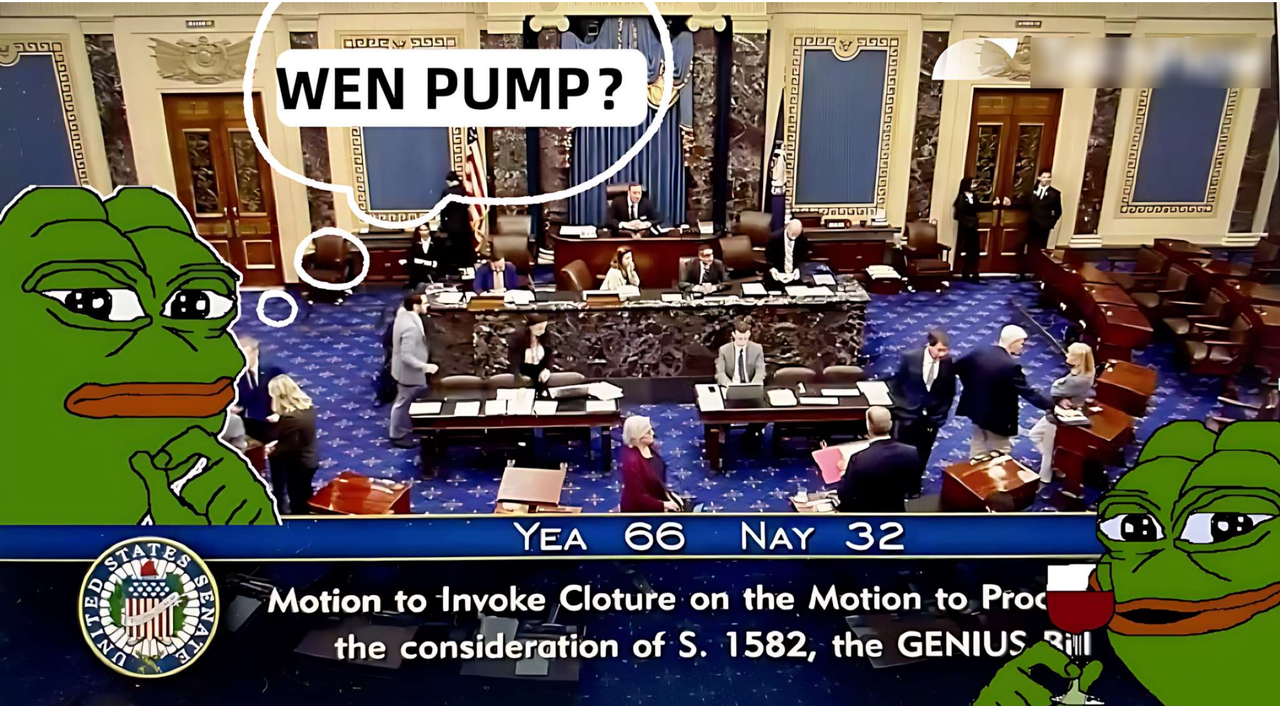Deng Pudun Supports Bitcoin DeFi: Expanding Practical Uses for Investors
 2025-05-23 16:48
2025-05-23 16:48Points of the article
The narrative of Bitcoin is expanding from "store of value" to the field of decentralized finance (DeFi)
Kevin Farrelly of Franklin Templeton believes this is a positive signal
DeFi scenarios endow Bitcoin with more "investment and use value", enhancing asset attractiveness
With the conclusion of the Dubai Token2049 Summit, the positioning of Bitcoin (BTC) is rapidly evolving: from traditional "digital gold" to an asset with potential for DeFi applications, competing with Ethereum, Solana, and others on the same track.
Institutions, including Franklin Templeton, believe this is a positive trend that will expand the practical use of Bitcoin without weakening its core appeal as a store of value.
I don't think Bitcoin DeFi will dilute the core narrative of Bitcoin, "said Kevin Farrelly, Managing Director of Franklin Templeton Blockchain Ventures and Vice President of Digital Assets, in a speech at this week's Bitlayer side event." On the contrary, this development expands Bitcoin's appeal to specific investment groups - those who have certain technical capabilities and can optimize Asset Allocation based on returns, security, or custom portfolio goals.
He pointed out: "These users are not trying to overthrow the core positioning of Bitcoin as a'store of value ', but to expand its functionality based on this. This is not a weakening of the narrative, but an iterative upgrade of the infrastructure."
Franklin Templeton is an investor in Bitlayer. Bitlayer is a Bitcoin Layer 2 network based on the BitVM solution. While maintaining the security of the mainnet, it introduces features such as smart contracts, DeFi integration, faster transaction processing, and lower fees, which cannot be natively implemented by the Bitcoin base layer.
The institution's Bitcoin ETF (EZBC) has recorded a net inflow of $260 million since its listing on January 11, 2024. As of May 1, 2025, the fund held a total of 5,213 BTC, exceeding $500 million at the current price.
From digital gold to digital financial infrastructure
Satoshi Nakamoto initially envisioned the vision of the Bitcoin blockchain, which was to create a decentralized financial system to achieve financial sovereignty and privacy protection, eliminating reliance on intermediaries. However, more than a decade later, the native cryptocurrency of this system, Bitcoin (BTC), quickly gained the reputation of "digital gold" and became a reliable store of value, and this narrative has been playing a good role.
According to CoinDesk data, the current market value of Bitcoin has exceeded $1.90 trillion, accounting for nearly 60% of the total market value of the entire cryptocurrency market (about $3.12 trillion). It is the most liquid cryptocurrency asset in the market, with a daily global trading volume of billions of dollars, and has been included in the asset reserves of multiple Listed Companies.
In addition, in recent years, a variety of compliance investment vehicles have emerged around Bitcoin, allowing participants in traditional Financial Marekt to access this type of asset.
For example, according to Farside Investors, the 11 Bitcoin spot ETFs listed in the US since January 2024 have attracted nearly $40 billion in funding so far. The net inflow of Ethereum spot ETFs during the same period was less than $3 billion.
Institutional investors' strong demand for Bitcoin allocation is widely attributed to its simple and persuasive narrative of "digital gold" - compared to platforms that support complex DeFi applications such as Ethereum or Solana, BTC has a clearer positioning, lower understanding threshold, and is therefore more easily accepted.
Farrelly said in an interview with CoinDesk, "The core positioning of Bitcoin is digital value storage. Unlike other more complex cryptocurrency projects, Bitcoin does not require too much technical explanation - its goals are clear and its logic is clear. This clarity may be the reason why it is easier to understand, construct investment models, and even allocate allocations through ETFs." He added, "In a cryptocurrency market full of complexity and speculative narratives, Bitcoin itself provides a stable and clear investment direction - and this direction is increasingly recognized by the market."
However, precisely because of this, many Bitcoin "minimalists" oppose directly introducing DeFi-like features into the Bitcoin main chain, fearing that this may weaken its core appeal.
However, at the Bitlayer side event and the main forum Token2049, the popularity of "Bitcoin DeFi" can be seen, reflecting the increasing demand of BTC holders for on-chain gain opportunities.Bitlayer co-founder Charlie Yechuan Hu told CoinDesk: "Bitcoin DeFi products with trust-minimizing cross-chain bridging mechanisms and sustainable revenue models are increasingly becoming a core demand for BTC holders and Bitcoin network maintainers."
He further pointed out, "We are building critical infrastructure through BitVM technology to empower Bitcoin DeFi. Many promising Bitcoin DeFi use cases will significantly increase the asset value of BTC and enhance users' motivation to hold and use it."
This Bitcoin DeFi wave may also benefit miners. Although Bitcoin block rewards are halved every four years, the increase in active level of on-chain transactions driven by DeFi applications can compensate for the decrease in revenue by increasing commission income, thereby supporting the long-term security and sustainability of the Bitcoin network.
Farrelly emphasized: "The most important thing about Bitcoin DeFi is that it introduces new transaction fee income - which is crucial for the long-term security and sustainable development of the network in the context of continuously decreasing block rewards."
Charlie Yechuan Hu also holds a similar view, pointing out that as network computing power continues to increase, miners need on-chain activities like Bitcoin DeFi to maintain their income.He added: We need to build a Bitcoin Rollup system with secure verification capabilities, so that transaction fees can flow back to the Bitcoin mainnet.
Latest news
-

- See more
Bitcoin breaks through 110,000 dollars, regrets and misses of those years
On May 22, the 14th anniversary of Bitcoin Pizza Day, Bitcoin broke through the ...
 2025-05-26
2025-05-26
-

- See more
Rethinking Bitcoin's Lightning Network Design from a Thunderbolt Perspective
Why can't I buy coffee with bitcoin?When most people think of Bitcoin, the first...
 2025-05-26
2025-05-26

